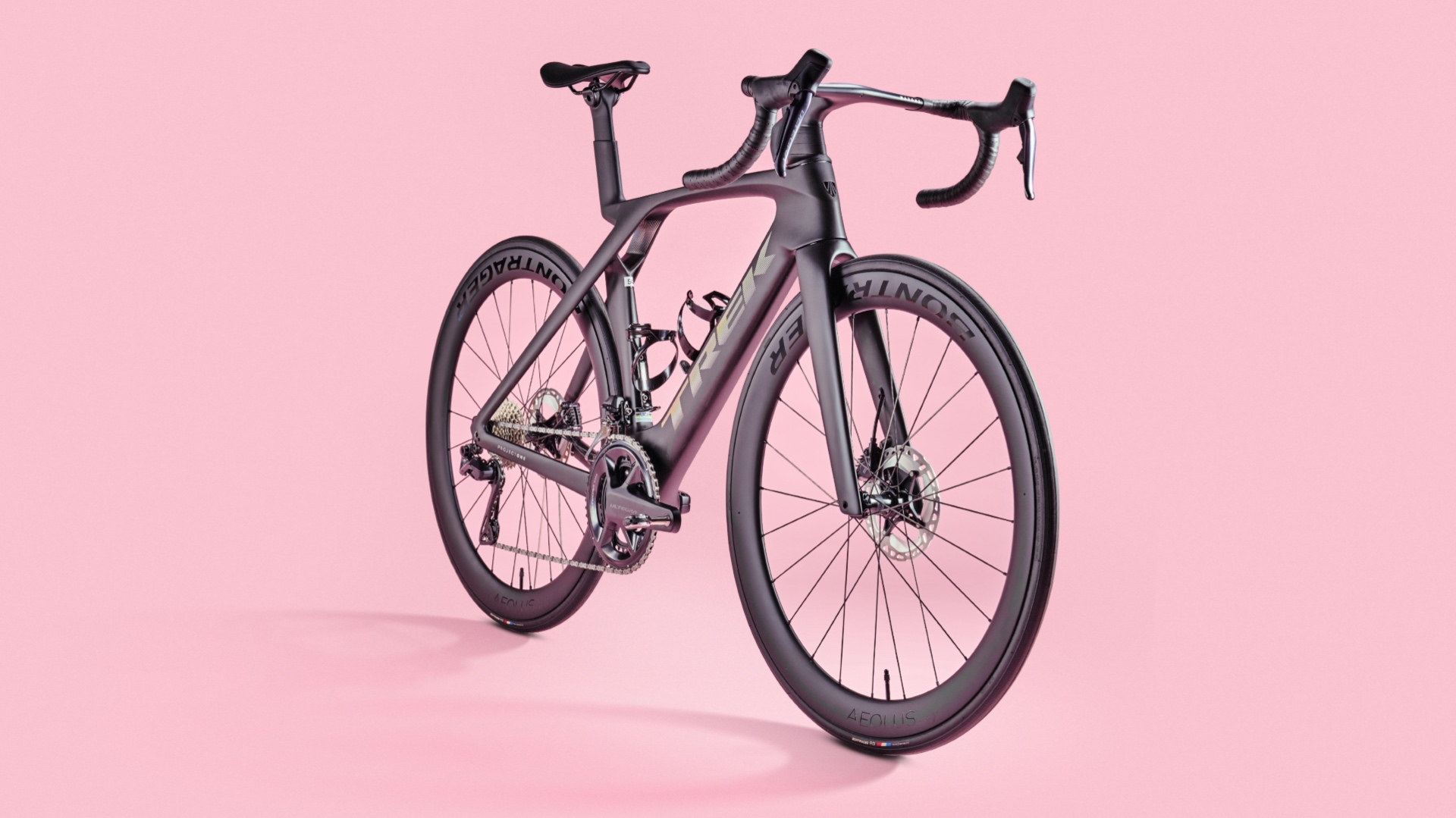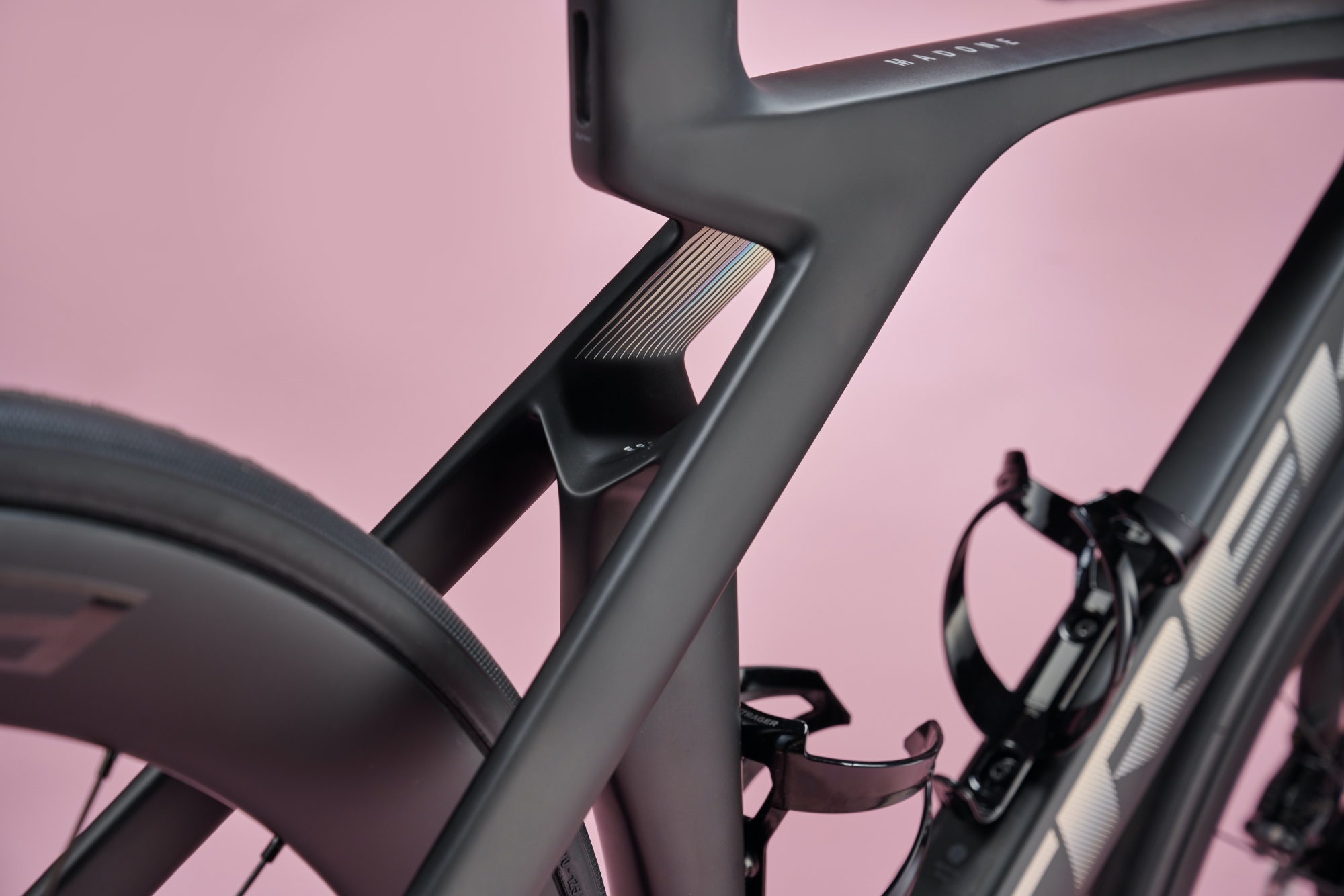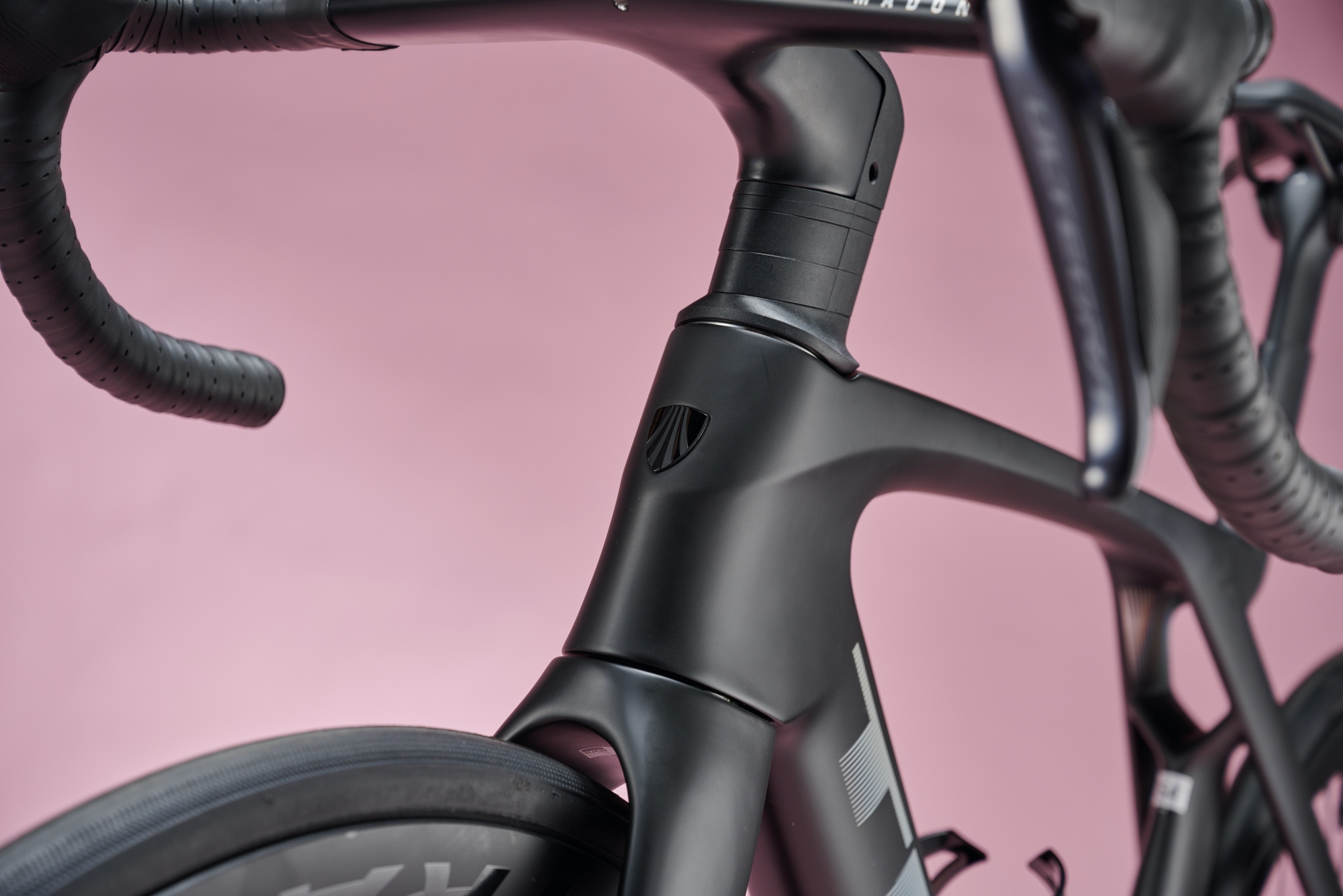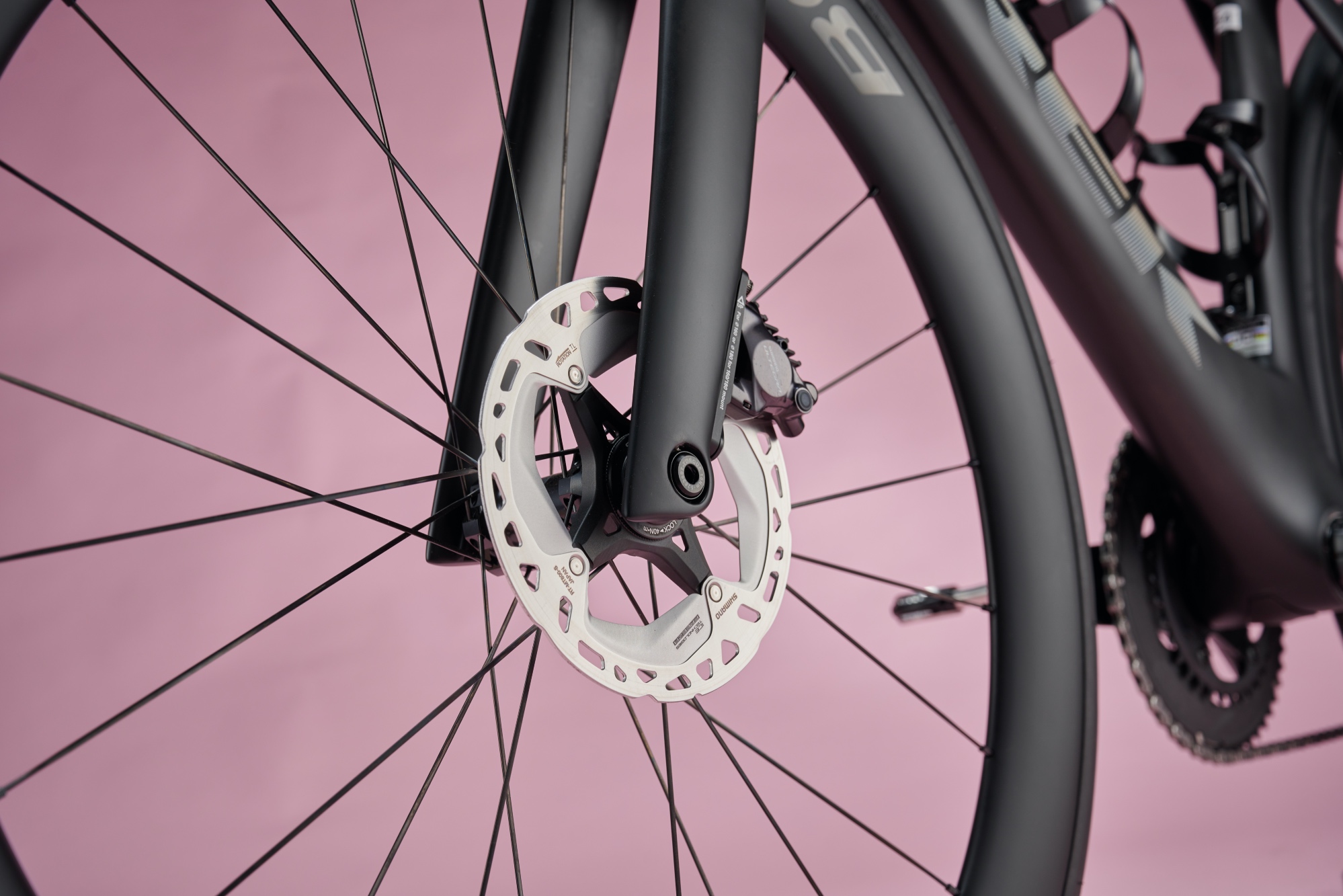Trek Madone SLR 7 Gen 7 review - very fast and very expensive
The latest Madone may have a hole through the seat tube but we couldn't find any in its performance

The Trek Madone is an absolute speed weapon. The deep-section tubes with the radical-looking cutout help, as does the newly designed handlebar, which is narrow and provides good wrist support for the ‘aero-hoods’ position. And then there are the 51mm deep Bontrager Aeolus Pro wheels. The handling is incredibly fast, responding to the smallest shift in weight and the tiniest tweaks of the bars, and ride quality is so impressive that it’s almost possible to overlook things like the narrow tires and ungenerous clearance - but you can’t ignore the price. If you have the budget and want a WorldTour-level race machine with exceptional handling and ride feel, this is the bike.
-
+
Super smooth ride
-
+
Light for an aero bike
-
+
Striking aesthetics
-
-
Expensive
-
-
Limited adjustability
-
-
No power meter
You can trust Cycling Weekly.

For this latest Gen 7 version of the Madone, Trek’s aero bike, the US brand removed the IsoSpeed Decoupler of the previous Gen 6 model and left, in its place, a big hole.
OK, it’s not the crude, reductionist approach it sounds like.
The old bike’s micro-adjustable suspension system at the top tube/seat tube juncture added weight and was mostly redundant since Trek discovered most riders would ‘set and forget’.

And by radically reengineering the frame Trek claims to have saved 300g, and says the new bike is almost 20 watts faster than its predecessor, which equates to 60 seconds per hour when ridden at 45kph. It looks radical, too - always a good thing for a new bike.
In our 2023 Race Bike of the Year grouptest we awarded the Madone 'best aero bike' against competition that included the Cervélo S5, the Canyon Aeroad and the Giant Propel.
However, over $9K / £10K for an Ultegra bike has to be unchartered territory - so how does it compare overall to the best road bikes?
Trek Madone 7 Gen 7: construction

Let’s peer a bit more closely into that hole or, to give it its real name, IsoFlow. The aerodynamic explanation for it is: “It’s a way to direct some high energy flow into a low energy region of the bike.” What that means is that the seat tube area creates a disproportionate amount of drag and the hole helps to dissipate this by adding what Trek calls a “jet of fast moving air.”
The latest race content, interviews, features, reviews and expert buying guides, direct to your inbox!
It turns out that only half of the claimed watt saving comes from the IsoFlow hole. Trek has entered the integrated cockpit wars (along with Colnago, Canyon, Cervélo et al) with a completely new and very slick-looking design but it’s neither adjustable nor V-shaped: according to Trek it saves watts by changing rider position rather than via the aerodynamic properties of the cockpit itself.
A standard 42cm bar becomes 39cm at the hoods and 42cm at the drops and there’s a backsweep so that a flat-forearms aero position on the hoods becomes very aero indeed.
There are 14 different combinations available and, since the backsweep gives the bar a shorter reach, it’s important to get the right one - if you’re like those of us who rode this bike, you’ll need a longer stem. You can change this at point of purchase at no extra cost, Trek told us, or the 1 1/8in steerer is compatible with a non-integrated stem and bar (though the frame is electronic groupset only).

The same goes for the seatmast. The cutout in the seat tube leaves less room for a long seatpost and less adjustability (around 6cm minimum to maximum) so if you are long-legged but prefer a smaller frame you may need the tall version that comes with the size 56 upwards (as I ideally would have done). There are also two offsets available.
Our size 54 with a standard short mast could only manage a maximum saddle height of 74cm and the reach felt very short with the 90mm stem cockpit it comes with.
The latest geometry is called H1.5 (halfway between the old H1 race and H2 endurance). The reduced reach combined with the shorter reach of the swept-back bar works very well for that super aero hoods position, but it does feel surprisingly short. The kamm-tailed rear of the stem is much closer to your knees than you’d expect.
The new SLR bikes are all made from Trek’s 800 OCLV carbon - from the 105-equipped SLR 6 up to the flagship SLR 9 - and are impressively light, especially compared with other aero bikes such as the Cervelo S5. Trek says this is its lightest ever disc Madone.
There’s clearance for 28mm tires max, which is tight by modern standards. This model comes with Bontrager Aeolus Pro 51 tubeless-ready wheels, set up with Bontrager R3 Hard-Case Lite 25mm tires and inner tubes - again, surprisingly narrow.
The ride
Despite the fact that the fit wasn’t optimal - I could have done with the size up - the ride quality of the Madone is absolutely incredible. That’s the first thing that strikes you, or rather doesn’t strike you.
Aero bikes used to supply a harsher ride simply because deep, bladed tubing doesn’t flex like round tubing. This was undoubtedly the reason why Trek bolted the IsoSpeed decoupler onto the Madone two iterations ago. So you might expect that with its suspension system gone, the latest bike might have gone backwards in comfort. Not a bit of it.

It feels like a coiled carbon spring - full of potential energy and floating over bad road surfaces seemingly without any effect on its speed. And this is on 25mm tires that aren’t even the best (at this price they really ought to be).
The handling is also exactly right. The shortish 90mm stem section of the cockpit could have made it a little twitchy, but thanks to the sweeping shape I found my weight sufficiently over the front wheel in the hoods position, and steering was fast but balanced on descents and tight corners.
So it passes ‘comfortable’ and ‘fast’ with flying colors (actually Deep Smoke for this one).
At 7.5kg it’s light for an aero bike - or any disc brake bike - and it leaps up hills as if it weighs even less. I was so impressed with its performance that I kept forgetting Trek also has the Emonda climbing bike. The next Emonda has its work cut out (pun intended).
Finally, stability in crosswinds. There’s one particular gateway on my test loop where any bike not designed for big yaw angles will be gusted and the Trek was indeed blown sideways slightly - but not alarmingly considering the deep wheels and frame tubes.
Value and conclusion
This bike is incredibly good but it’s also incredibly expensive. It’s a full $1,000 / £1,000 more than the equivalent outgoing Gen 6 Madone SLR 7, and you’d have to look hard to find a more expensive Ultegra Di2-equipped bike from the other mainstream brands.
The Canyon Aeroad CFR with Dura-Ace costs $8,999 / £8,799, while the Cervelo S5 with SRAM Force AXS costs $9,000 / £9,200. The Giant Propel Advanced SL1 also with SRAM Force costs $8,000 / £8,999.
You might also reasonably expect a power meter at this price - those three bikes all come with them - but it’s just the regular Ultegra crankset here.
So the price is stratospheric but compared with the current aero bikes I’ve ridden so far including the Colnago V4RS, Canyon Aeroad SLX, Cervelo S5, Tarmac SL7 and Pinarello Dogma F, the ride quality is superior.
Spec
- Frame: 800 Series OCLV carbon
- Fork: KVF carbon, tapered steerer
- Groupset: Shimano Ultegra Di2
- Wheels: Bontrager Aeolus Pro 51
- Tires: Bontrager R3 Hard-Case Lite 25mm
- Cockpit: Madone integrated
- Seatpost: Madone aero internal
- Saddle: Bontrager Aeolus Elite
- Weight: 7.5kg
- Contact: www.trekbikes.com
Simon Smythe is a hugely experienced cycling tech writer, who has been writing for Cycling Weekly since 2003. Until recently he was our senior tech writer. In his cycling career Simon has mostly focused on time trialling with a national medal, a few open wins and his club's 30-mile record in his palmares. These days he spends most of his time testing road bikes, or on a tandem doing the school run with his younger son.
